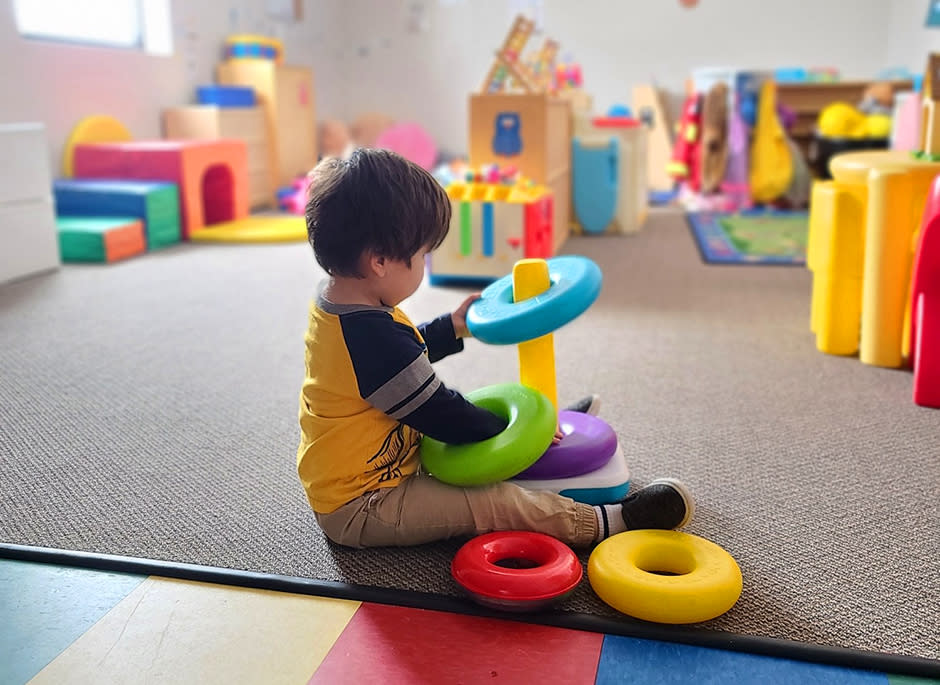Adequate child care is a major problem, new study says

Lack of childcare continues to be a major factor as South Dakota struggles to meet its workforce needs amid declining birthrates.
The latest study, the Codington County Child Care Survey, was released Wednesday. It revealed that 74 percent of respondents said Watertown has an insufficient number of child care slots. The study offered some potential solutions.
A lack of daycare statewide is troublesome for employers, who are struggling to find workers. Recent legislative testimony by SD Department of Labor Secretary Maria Hultman on an unrelated workforce bill revealed that the state has 23,000 job openings, but only 11,000 people are unemployed.
The state’s Department of Social Services in 2021 also identified child care as a significant workforce problem, yet this year’s legislative session contained no substantive discussion on the issue. But it may be the topic of a legislative summer study.
The Dec. 7, 2021, Kids Count South Dakota report entitled “A Modern Economy Depends on Child Care. South Dakota Can Make it Affordable and Accessible,” explored the issue.
“Child care is a critical component of a modern and thriving economy,” the report said. “High-quality and affordable care is essential for parents to stay in the workforce. Businesses across all sectors need workers who have a safe and reliable place for their children during the day.”
Statewide, the report said that of the 73,000 children younger than age six, about 74 percent have parents in the workforce.
The Codington County study said 84.7 percent of the county’s children “rely on some form of child care as both parents are in the labor force.”
The issues identified in the latest study revealed challenges around availability, cost and hours of operation.
The highest percentage of childcare use in Codington County came in unregistered in-home child care centers with about 44 percent of respondents using un-registered day care centers or family or friends.
Licensed day care centers (20.31%) and Registered In-Home Child Care Centers (13.41%) offered space for about 34 percent of Codington County’s children with “school or community out of school time programs” being used by 21.84 percent.
Codington County Welfare Office Director Sara Foust said a Social Services Advisory Council has been created to address the issue.
“We know we are certainly not unique,” she said. “Our strategic planning group is looking at a lot of different areas. Our solution has got to come from our community. We can’t wait for others to solve this.”
Other communities will need to act as well. The statewide report said “In the past decade, registered family homes have seen a drastic decline in available capacity, with half as many available slots today as in 2012. Licensed and registered family homes provide critical access to child care in rural communities that may not have enough demand to open a larger child care center.”
The lack of and cost of daycare may be one factor in declining birthrates. The Codington County report said, “According to South Dakota Department of Health, there was a 22 percent decrease in the birth rate in Codington County from year 2011 to year 2020.”
Statewide, SD birthrates also are concerning. A SD Dept. of Health report said “There were 11,304 births to South Dakota residents in 2021, for a crude birth rate of 12.3 per 1,000 South Dakota resident population. This is the second lowest crude birth rate ever. The last three years have now been the three lowest years ever.”
Declining birthrates have caused Watertown’s school system to begin discussions on closing one of its elementary schools.
Foust said Codington County’s 18-member group meets every third Tuesday at her office and is working to build a broader coalition of industry, community leaders and day care providers to solve the issue.
“Day care is a heavy investment,” she said. “Generally, they are not great profit makers. It is expensive to run, and it is expensive to pay for.”
But, she said, “we want our kids safe and employers need to know that their employees have a good place for their children.”
There are two immediate grant opportunities for day care providers. The South Dakota Family Day Care Transition Grants has up to $15,000 available to any family day care provider willing to work with the SD Dept. of Social Services “to meet minimum health and safety requirements and become a state registered provider.”
A second grant opportunity is called the SD Child Care Expansion & Startup Grant. Anyone interested in starting a child care program can get help with supplies and up to five months of operating expenses.
Child care assistance also is available to low-income families through the states Department of Social Services.
The study can be accessed at https://www.codington.org/wp-content/uploads/2023/03/Codington-County-Survey-Report.pdf. For more information on being a part of solving the child care problem, contact Foust at 605-753-2592.
This article originally appeared on Watertown Public Opinion: Adequate child care is a major problem, new study says

